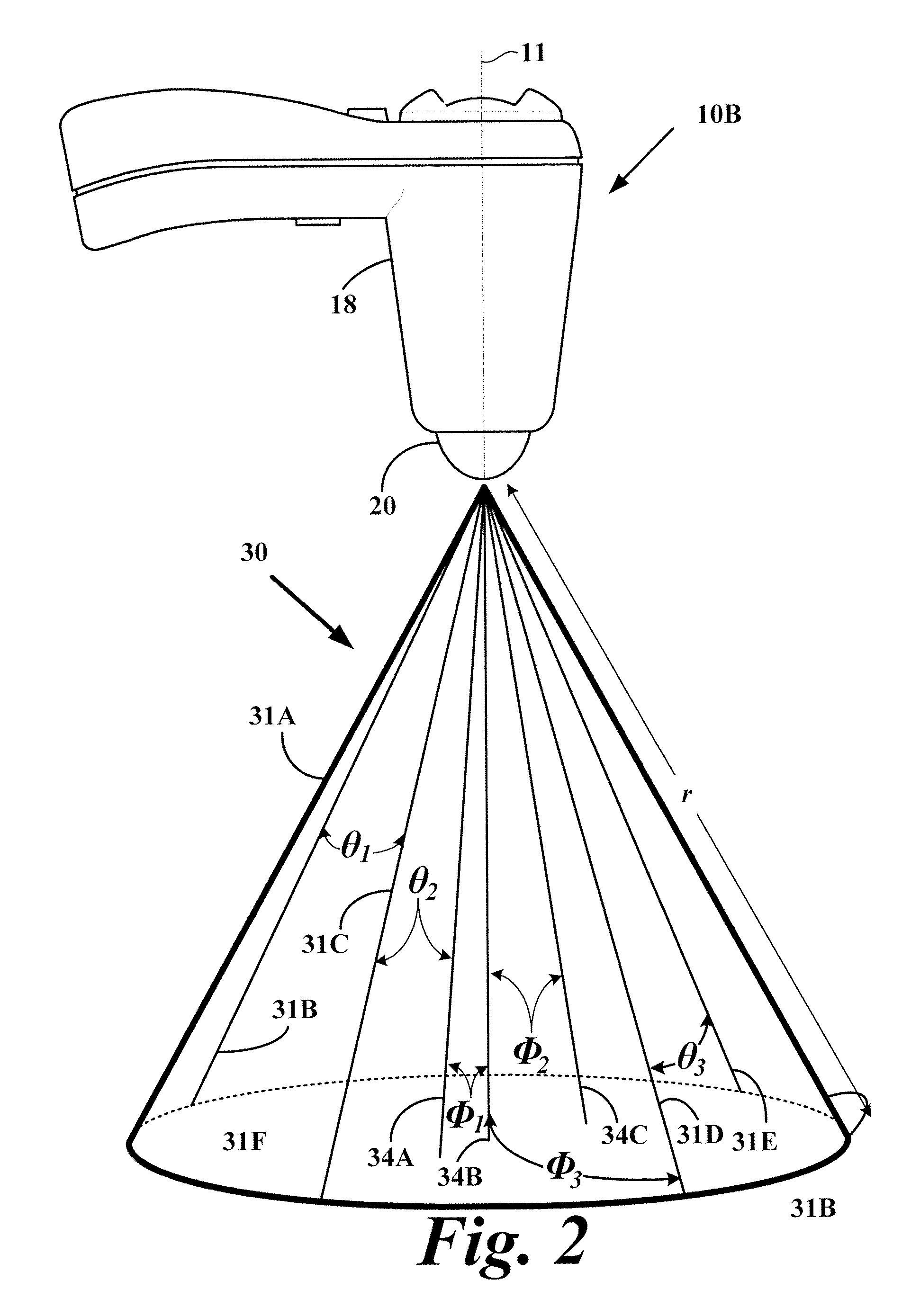System and method for measuring bladder wall thickness and presenting a bladder virtual image
a virtual image and bladder technology, applied in the field of ultrasound, to achieve the effect of improving the accuracy and precision of the wall location loci
- Summary
- Abstract
- Description
- Claims
- Application Information
AI Technical Summary
Benefits of technology
Problems solved by technology
Method used
Image
Examples
Embodiment Construction
[0138]The portable embodiment of the ultrasound transceiver of the present invention is shown in FIG. 1. The transceiver 10 includes a handle 12 having a trigger 14 and a gender changer 16, a transceiver housing 18 attached to the handle 12, a transceiver dome 20 and a display 24 for user interaction, attached to the transceiver housing 18 at an end opposite the transceiver dome 20. The transceiver 10 is held in position against the body of a patient by a user. In operation, the transceiver transmits a radio frequency ultrasound signal within the 2 to 10 MHz range to the body and then receives a returning echo signal. The returning echo signal provides an image signal for image processing. The gender changer 16 serves to adjust the delivery and reception of radio frequency ultrasound to the anatomy of a male patient and to the anatomy of a female patient. The transceiver is controlled by a microprocessor and software associated with the microprocessor and a digital signal processor ...
PUM
 Login to View More
Login to View More Abstract
Description
Claims
Application Information
 Login to View More
Login to View More - R&D
- Intellectual Property
- Life Sciences
- Materials
- Tech Scout
- Unparalleled Data Quality
- Higher Quality Content
- 60% Fewer Hallucinations
Browse by: Latest US Patents, China's latest patents, Technical Efficacy Thesaurus, Application Domain, Technology Topic, Popular Technical Reports.
© 2025 PatSnap. All rights reserved.Legal|Privacy policy|Modern Slavery Act Transparency Statement|Sitemap|About US| Contact US: help@patsnap.com



